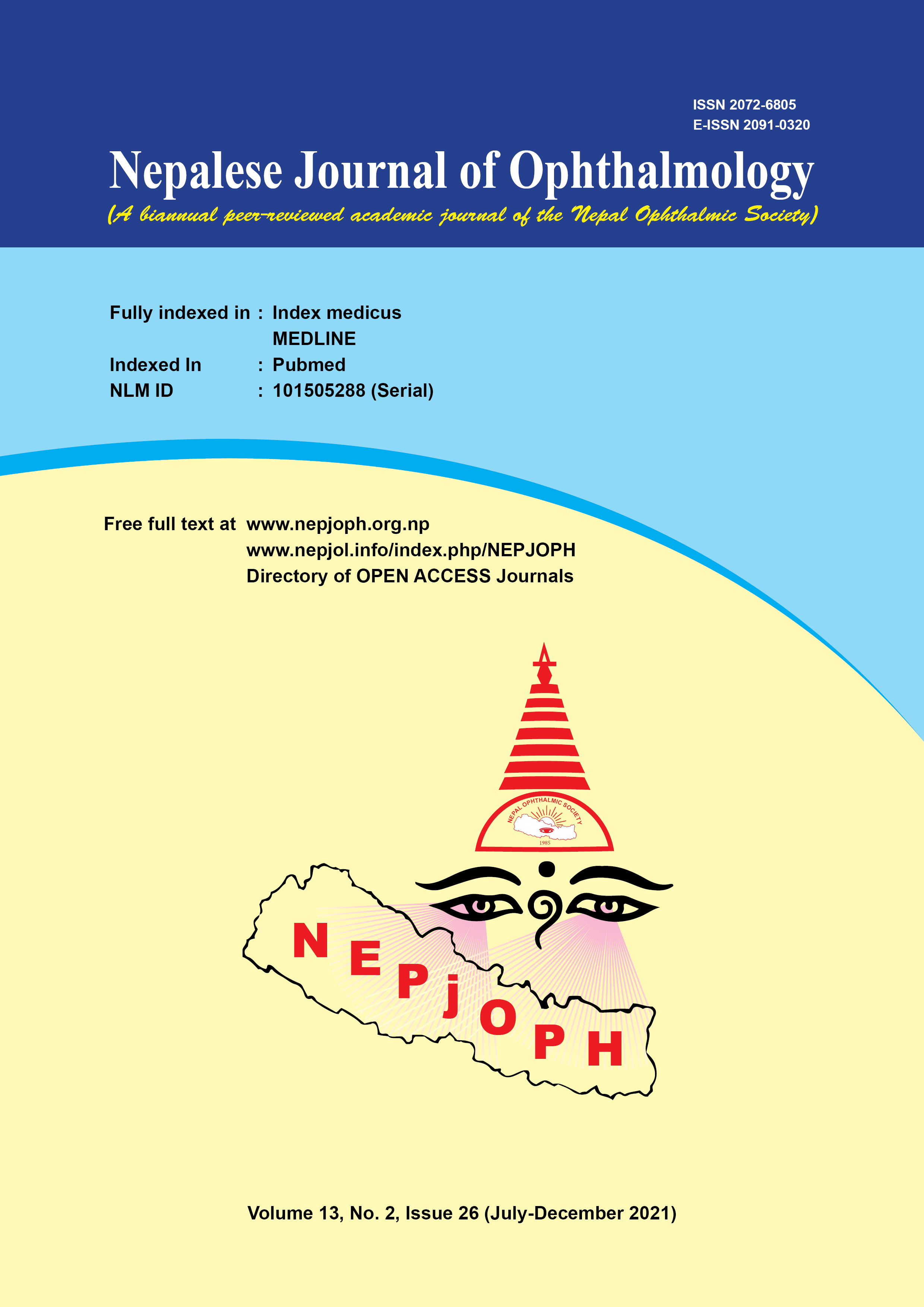Clinicopathologic Presentation and Management of Malignant Orbito-ocular Tumors at a Tertiary Care Hospital in Nepal
DOI:
https://doi.org/10.3126/nepjoph.v13i2.32865Keywords:
Malignant orbital tumors, Malignant intraocular tumors, OSSN, Retinoblastoma, Orbital metastasisAbstract
Introduction: This study was conducted to evaluate the clinical presentations and management of various Orbito-ocular malignancies in Nepal.
Materials and methods: This is a prospective study of ocular malignant cases conducted at a tertiary care eye hospital in Kathmandu, Nepal. One hundred and seventeen newly diagnosed eyes with ocular malignancy of 106 patients presenting to the clinic in a year from September 2018 to August 2019 were included for analysis. Patients’ demography, clinical features, various types of malignancies seen in eyes and their management were evaluated.
Results: The mean age of patients was 30.35 years with a range from 1 month to 84 years and standard deviation of 26.63. 56% of the total were male. Red eyes and visible mass were the most common symptoms in 23% with intraocular contents in 48% being the most common site involved. Different types of ocular malignancies were detected, among which retinoblastoma was the most common in 38% of patients. Diagnosis in most patients was clinical and/or radiological; incision biopsy was required in 1.7% patients only. Surgical excision of the tumor was the most common treatment done in 29% followed by enucleation in 27% of eyes. Bilateral involvement of the eyes was seen in 10% of the patients.
Conclusion: Malignant orbito-ocular tumors can be seen in any age group. Retinoblastoma is the commonest malignancy seen. With the help of imaging, diagnosis is near accurate; hence biopsy is not required in most cases before commencing treatment.
Downloads
Downloads
Published
How to Cite
Issue
Section
License
Copyright (c) 2021 Nepalese Journal of Ophthalmology

This work is licensed under a Creative Commons Attribution-NonCommercial-NoDerivatives 4.0 International License.
This license enables reusers to copy and distribute the material in any medium or format in unadapted form only, for noncommercial purposes only, and only so long as attribution is given to the creator.




